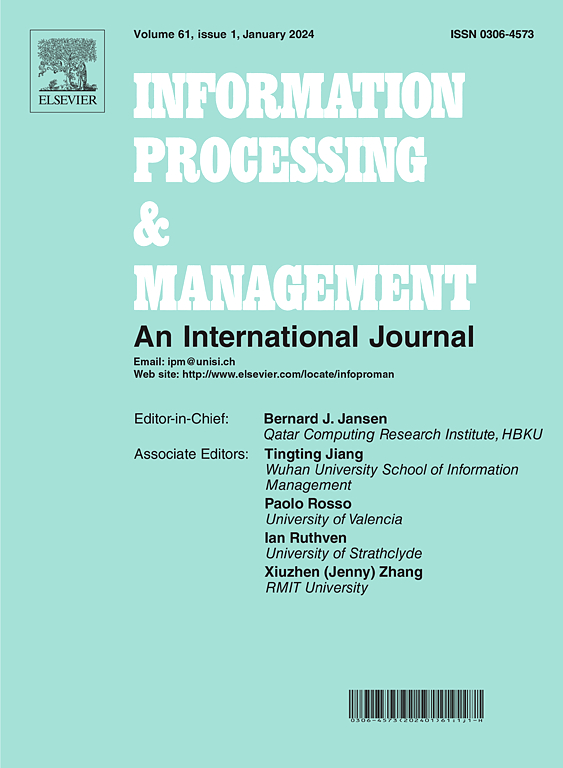通过增强工人能力建模实现众包中的稳健注释聚合
IF 7.4
1区 管理学
Q1 COMPUTER SCIENCE, INFORMATION SYSTEMS
引用次数: 0
摘要
众包中的真相推理是研究如何从具有不同专业知识的工作者那里汇总有噪声和有偏差的注释,是提高众包注释质量的一项基本技术。一般来说,基于混淆矩阵的方法更有前途,工作效率也更高,因为它们使用混淆矩阵而不是单一的真实值来模拟每个工作人员的能力。然而,K×K 模式(K 指类的数量)导致的类不平衡和训练数据不足仍是混淆矩阵学习的两大问题,这就要求对工作者的混淆矩阵建立健壮的建模结构。在本文中,我们提出了细粒度贝叶斯分类器组合模型(FGBCC),利用 K 个单变量高斯分布和标准 softmax 函数的组合来改进对工人能力的估计。与现有方法相比,FGBCC 能够学习工人的广泛行为,并且由于其较强的泛化能力,不易受到以往方法所存在的这些问题的影响。此外,考虑到复杂后验的精确解不可用,我们设计了一种计算高效的算法来近似后验。在涵盖广泛领域的 24 个实际数据集上进行的大量实验验证了 FGBCC 相对于 11 种最先进基准方法的明显优势。本文章由计算机程序翻译,如有差异,请以英文原文为准。
Robust annotation aggregation in crowdsourcing via enhanced worker ability modeling
Truth inference in crowdsourcing, which studies how to aggregate noisy and biased annotations from workers with varied expertise, is a fundamental technology powering the quality of crowdsourced annotations. Generally, confusion-matrix-based methods are more promising and worker better, as they model each worker’s ability using a confusion matrix rather than a single real value. However, the imbalanced classes and the insufficient training data caused by the pattern ( refers to the number of classes) are still two major issues for the learning of confusion matrices, which call for a robust modeling structure of workers’ confusion matrices. In this article, we propose in response a Fine-Grained Bayesian Classifier Combination model (FGBCC), in which a combination of univariate Gaussian distributions and the standard softmax function is exploited with an aim to improve the estimation of workers’ abilities. Compared to existing methods, FGBCC is capable of learning extensive worker behaviors and is less susceptible to these issues that previous methods suffer from, owing to its stronger generalization ability. Moreover, Considering the exact solution to the complex posterior is unavailable, we devise a computationally efficient algorithm to approximate the posterior. Extensive experiments on 24 real-world datasets covering a wide range of domains, verify the clear advantages of FGBCC over 11 state-of-the-art benchmark methods.
求助全文
通过发布文献求助,成功后即可免费获取论文全文。
去求助
来源期刊

Information Processing & Management
工程技术-计算机:信息系统
CiteScore
17.00
自引率
11.60%
发文量
276
审稿时长
39 days
期刊介绍:
Information Processing and Management is dedicated to publishing cutting-edge original research at the convergence of computing and information science. Our scope encompasses theory, methods, and applications across various domains, including advertising, business, health, information science, information technology marketing, and social computing.
We aim to cater to the interests of both primary researchers and practitioners by offering an effective platform for the timely dissemination of advanced and topical issues in this interdisciplinary field. The journal places particular emphasis on original research articles, research survey articles, research method articles, and articles addressing critical applications of research. Join us in advancing knowledge and innovation at the intersection of computing and information science.
 求助内容:
求助内容: 应助结果提醒方式:
应助结果提醒方式:


